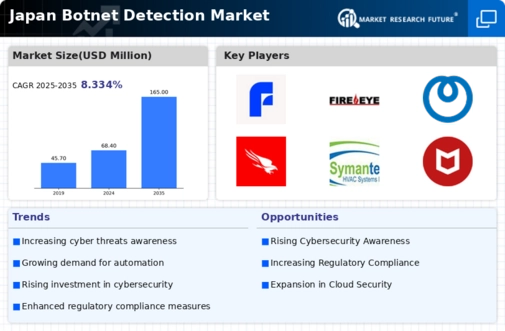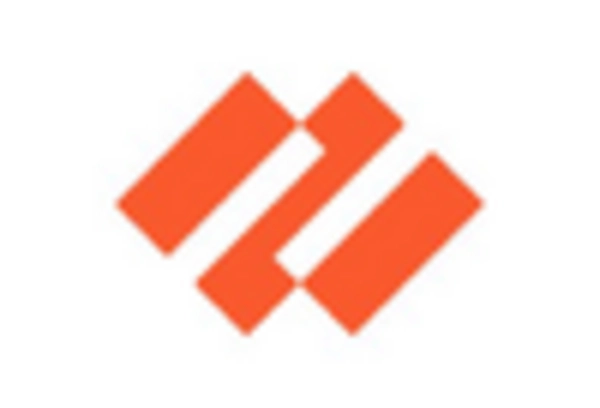Rising Cyber Threats
The botnet detection market in Japan is experiencing growth due to the increasing frequency and sophistication of cyber threats. Cybercriminals are leveraging advanced techniques to create and manage botnets, which poses significant risks to businesses and individuals alike. In 2025, it is estimated that cybercrime could cost the Japanese economy over $1 trillion, highlighting the urgent need for effective botnet detection solutions. As organizations recognize the potential financial and reputational damage from these threats, investments in botnet detection technologies are likely to rise. This trend indicates a growing awareness of cybersecurity risks, driving demand for innovative solutions within the botnet detection market.
Technological Advancements
The rapid evolution of technology is a key driver for the botnet detection market in Japan. Innovations in cloud computing, IoT, and mobile technologies have expanded the attack surface for cybercriminals, necessitating advanced detection mechanisms. In 2025, the market for botnet detection solutions is projected to reach approximately $500 million, reflecting the increasing reliance on sophisticated technologies to combat emerging threats. Organizations are seeking solutions that can integrate seamlessly with existing infrastructure while providing real-time threat intelligence. This demand for cutting-edge technology is likely to propel the growth of the botnet detection market, as companies strive to stay ahead of cyber adversaries.
Expansion of Digital Services
The ongoing expansion of digital services in Japan is a crucial driver for the botnet detection market. As more businesses transition to online platforms and digital transactions, the potential for cyber threats increases correspondingly. The rise of e-commerce and online banking has created new opportunities for cybercriminals to exploit vulnerabilities. In 2025, it is projected that the number of online transactions in Japan will exceed 1 billion, underscoring the need for effective botnet detection solutions. Organizations are likely to invest in these technologies to ensure the security of their digital operations, thereby fueling growth in the botnet detection market.
Increased Regulatory Scrutiny
Regulatory frameworks in Japan are becoming more stringent, compelling organizations to adopt robust cybersecurity measures, including botnet detection solutions. The Personal Information Protection Act (PIPA) mandates that companies protect sensitive data, which has led to a surge in demand for effective detection and mitigation strategies. As compliance becomes a critical concern, businesses are investing in botnet detection technologies to avoid potential fines and reputational damage. The botnet detection market is expected to benefit from this trend, as organizations prioritize compliance and risk management in their cybersecurity strategies. This regulatory environment is likely to drive sustained growth in the market.
Growing Awareness of Cybersecurity
There is a notable increase in awareness regarding cybersecurity among Japanese businesses and consumers, which is positively impacting the botnet detection market. As high-profile cyber incidents make headlines, organizations are recognizing the importance of proactive measures to safeguard their digital assets. In 2025, surveys indicate that over 70% of companies in Japan are prioritizing cybersecurity investments, with a significant portion allocated to botnet detection solutions. This heightened awareness is likely to drive demand for advanced detection technologies, as businesses seek to protect themselves from the evolving landscape of cyber threats. The botnet detection market is poised for growth as a result.

















Leave a Comment